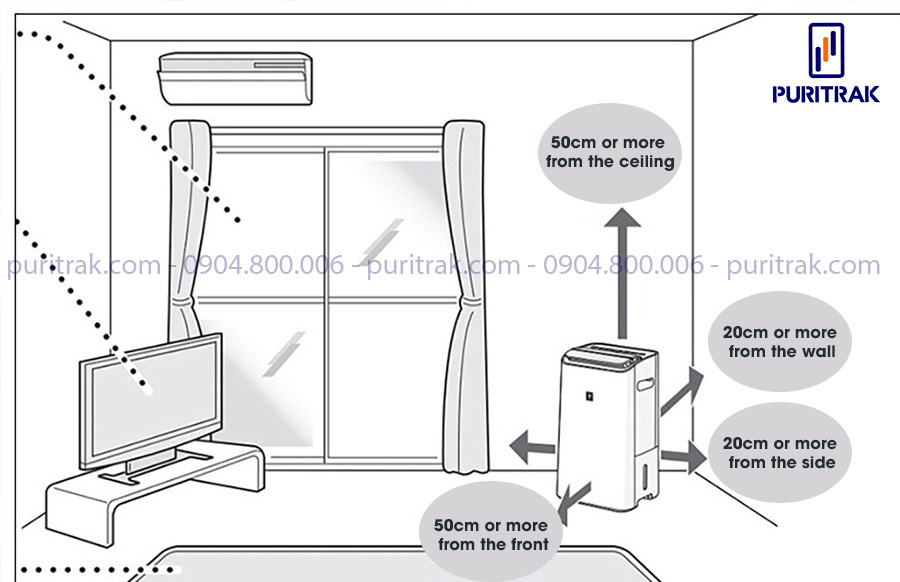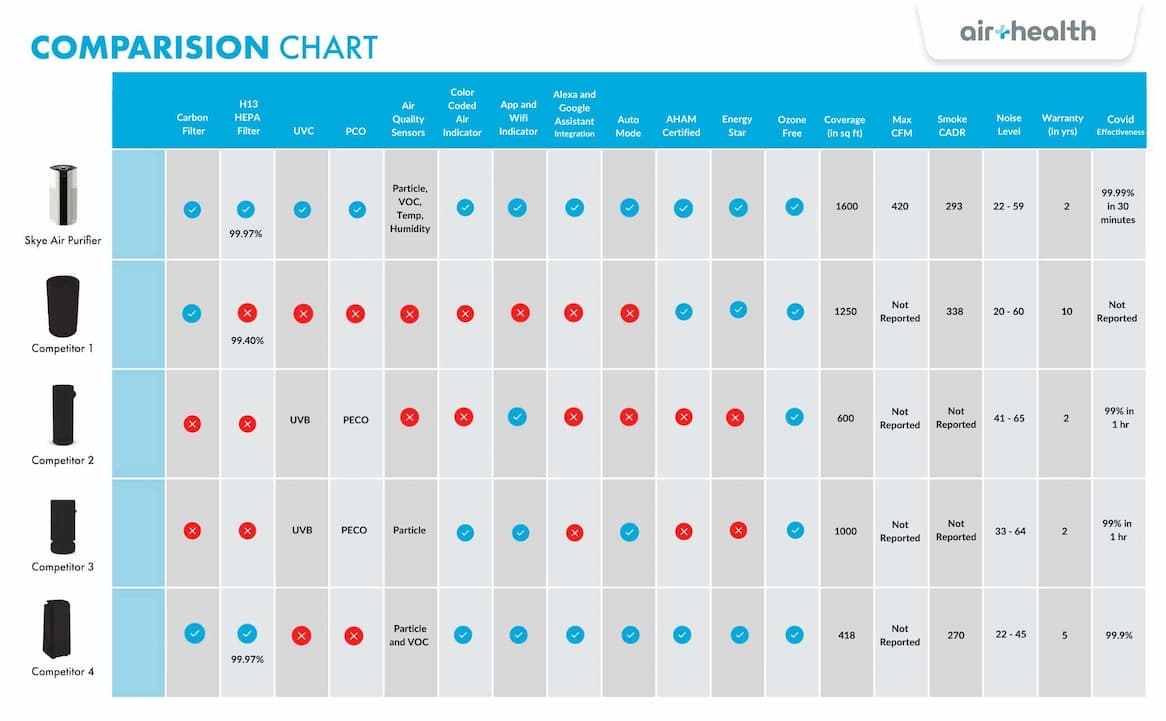Are you struggling to get the most out of your air purifier? It’s frustrating to invest in cleaner air, only to find it’s not making a noticeable difference. Often, the issue isn’t the purifier itself, but where you place it. A strategic location can dramatically improve its effectiveness. This guide will provide a quick fix – where to place your purifier for immediate improvement – and a comprehensive look at maximizing its performance.
This guide will go beyond simply saying “put it in the room.” We’ll cover optimal placement based on room size, layout, air circulation, and common pollutants. You’ll learn how to avoid common placement mistakes, understand the science behind air purifier efficiency, and gain practical tips to ensure you’re breathing the cleanest air possible. By the end of this article, you’ll confidently know exactly where to place your air purifier for optimal results.
Common Causes of Ineffective Air Purifier Performance
Before diving into placement, let’s understand why your air purifier might not be working as well as you expect:
- Incorrect Room Size: The purifier isn’t rated for the room’s square footage.
- Obstructions: Furniture or walls are blocking airflow.
- Poor Air Circulation: The room lacks sufficient airflow for the purifier to draw air effectively.
- Placement Near Pollution Sources: Placing it after pollutants are dispersed, rather than near the source.
- Filter Maintenance: Dirty or clogged filters drastically reduce efficiency.
How to Place Your Air Purifier for Maximum Effectiveness

1. Central Location is Key
The most effective placement is generally in a central location within the room. This allows the purifier to draw air from all directions and circulate clean air evenly.
- Avoid Corners: Corners restrict airflow and limit the purifier’s reach.
- Open Space: Ensure there’s at least 1-2 feet of clear space around all sides of the unit.
- Height Matters: Position the purifier at a height that allows for optimal air intake. Typically, this is off the floor, but not directly on a high shelf where airflow is restricted.
2. Consider Room Layout and Airflow
Think about how air naturally circulates in your room.
- Doorways & Vents: Placing the purifier near doorways or air vents can help capture pollutants as they enter or are dispersed. However, avoid placing it directly in the path of a strong draft, as this can overwhelm the filter.
- Traffic Patterns: Avoid high-traffic areas where people might accidentally bump into or obstruct the unit.
- Room Shape: In long, narrow rooms, experiment with placement along the long wall to maximize coverage.
3. Target Specific Pollution Sources
For targeted air purification, place the unit near the source of the pollutants.
- Bedroom: Place near the bed to filter allergens and dust while you sleep.
- Kitchen: Place near the stove to capture cooking fumes and odors. However, keep it far enough away to avoid grease buildup on the unit.
- Pet Area: Place near where your pet spends most of its time to control pet dander.
- Home Office: Place near your desk to filter dust, allergens, and VOCs from printers and office supplies.
4. Room Size and CADR Ratings
Choosing the right purifier for your room size is crucial. CADR (Clean Air Delivery Rate) indicates how quickly a purifier cleans a room.
- Calculate Room Size: Measure the length and width of the room and multiply to get the square footage.
- Check CADR Ratings: Match the purifier’s CADR rating to your room size. Higher CADR ratings are better for larger rooms. Look for separate CADR ratings for dust, pollen, and smoke.
- Multiple Purifiers: For very large rooms, consider using multiple smaller purifiers instead of one large unit.
Pro Tips for Optimal Air Purifier Placement
- Elevate the Unit: Placing the purifier on a small table or stand can improve airflow, especially in carpeted rooms.
- Keep Doors & Windows Closed: Minimize the introduction of outdoor pollutants by keeping doors and windows closed, especially during high pollution days.
- Run Continuously: For best results, run the purifier 24/7, even when you’re not in the room.
- Filter Maintenance is Critical: Regularly check and replace filters according to the manufacturer’s instructions. A dirty filter significantly reduces efficiency.
- Consider Multiple Units: For multi-story homes, place a purifier on each floor.
- Airflow Direction: Pay attention to the direction of airflow. Ensure clean air is being distributed throughout the room, not just directed at a wall.
Professional Help Section
Sometimes, despite your best efforts, you may still struggle to achieve satisfactory air quality. Here are signs it’s time to consult a professional:
- Persistent Allergies/Asthma Symptoms: If your symptoms don’t improve despite using a properly sized and placed air purifier.
- Mold Growth: If you suspect mold, a professional inspection is crucial. Air purifiers can help with surface mold but won’t address the root cause.
- Unidentified Odors: If you have lingering odors that the purifier isn’t removing.
- HVAC System Issues: If you suspect your HVAC system is contributing to poor air quality.
What to look for in a service provider: Certified HVAC technicians specializing in indoor air quality assessment.
Typical cost ranges: $100 – $500 for an indoor air quality assessment.
FAQ Section
Q: Can I place my air purifier in a closet?
A: It’s generally not recommended. Closets lack sufficient airflow, hindering the purifier’s performance.
Q: What if I have a very open floor plan?
A: Consider using multiple purifiers strategically placed throughout the open space.
Q: Does the type of filter matter for placement?
A: Yes. HEPA filters are best for particulate matter, while activated carbon filters are best for odors and gases. Place the purifier closer to the source of the specific pollutant you’re targeting.
Q: How does furniture affect air purifier placement?
A: Furniture can obstruct airflow. Ensure there’s adequate space around the purifier, and avoid placing it directly behind or in front of large objects.
Q: Will an air purifier help with smoke from wildfires?
A: Yes, a purifier with a HEPA filter and activated carbon filter can significantly reduce smoke particles and odors.
Alternative Solutions Section

Sometimes an air purifier isn’t the complete solution. Here are some alternatives and supplemental approaches:
| Solution | Pros | Cons | Best For |
|---|---|---|---|
| Open Windows (when air quality is good) | Free, provides fresh air | Introduces outdoor pollutants, not suitable during high pollution days | Mild allergy sufferers, improving ventilation when air quality is good |
| Houseplants | Natural air purification, adds aesthetic value | Limited purification capacity, requires maintenance | Supplementing air purification, improving indoor aesthetics |
| HVAC System Upgrade | Whole-house filtration, improved air quality | Expensive, requires professional installation | Long-term air quality improvement, whole-house coverage |
Get Your Air Purifier Working Again
By following these guidelines, you can significantly improve the effectiveness of your air purifier. Remember:
- Central location with clear airflow is ideal.
- Target specific pollution sources when possible.
- Match the purifier’s CADR rating to your room size.
- Maintain filters regularly.
Don’t let poor placement undermine your investment in cleaner air. Implement these strategies today and breathe easier!
Have you successfully optimized your air purifier placement? Share your experience and any helpful tips in the comments below!





